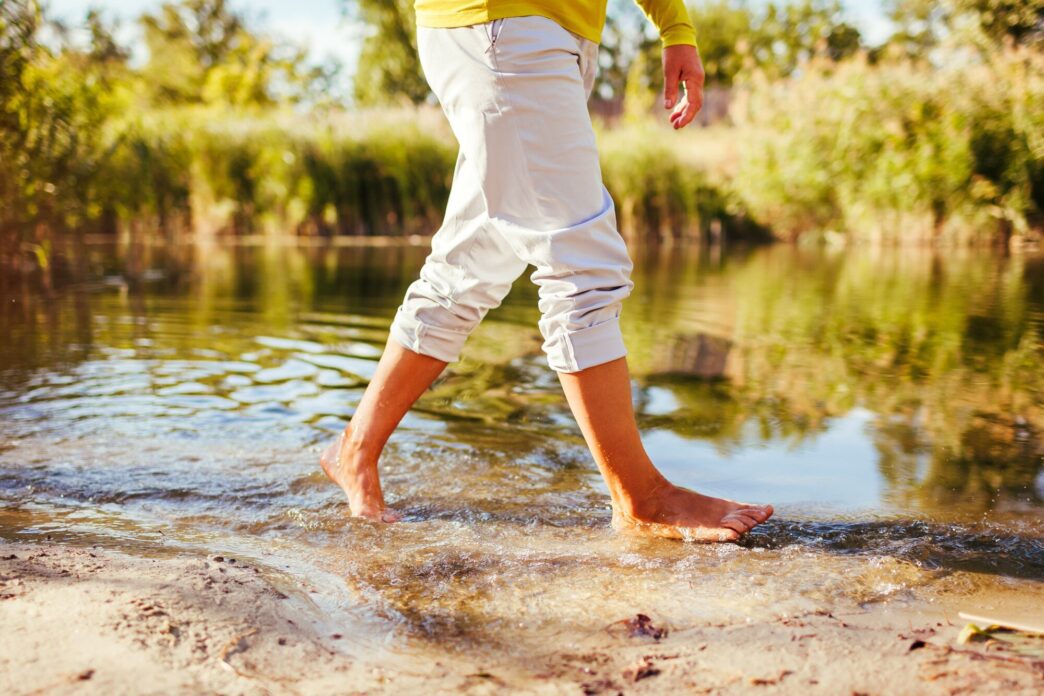A Quick Takeaway
The Story Behind the Trend
How to Make It Work for You
The Community View
Embracing barefoot living, or adopting minimalist footwear, is a growing wellness trend that encourages individuals to reconnect with the natural mechanics of their feet. This practice, often initiated gradually, aims to strengthen intrinsic foot muscles, improve balance, enhance proprioception, and foster a more natural gait. By shedding conventional shoes that often restrict movement and alter foot function, proponents seek to alleviate common foot ailments and promote overall musculoskeletal health. The journey involves a mindful transition, starting in safe environments and progressing as the feet adapt, ultimately leading to more robust and resilient lower limbs.
The Science-Backed Benefits of Barefoot Living
Our feet are complex structures, equipped with numerous bones, muscles, ligaments, and nerve endings designed for intricate movements and sensory feedback. Regular use of supportive, cushioned shoes can, over time, weaken these natural mechanisms, leading to reliance on external support rather than intrinsic strength.
Transitioning to barefoot living helps reactivate and strengthen the intrinsic muscles of the foot, which are crucial for arch support and stability. This strengthening can significantly reduce the risk of common issues like plantar fasciitis, bunions, and hammertoes, which often stem from muscular imbalances and restricted foot movement.
Furthermore, going barefoot enhances proprioception, our body’s ability to sense its position and movement. Direct contact with various surfaces sends rich sensory information to the brain, improving balance, coordination, and overall body awareness. This heightened sensory input can lead to better posture and a more efficient, natural walking pattern.
Starting Your Barefoot Journey Safely
The key to successful barefoot living is a slow, gradual transition. Your feet need time to adapt to new demands, just like any other muscle group being trained.
Begin Indoors
Start by spending time barefoot around your home. This allows your feet to adjust to walking without external support on a controlled, clean surface. Pay attention to how your feet feel and move.
Choose Your Surfaces Wisely
Once comfortable indoors, venture onto soft, natural outdoor surfaces like grass, sand, or smooth dirt paths. These surfaces provide natural cushioning and varied textures, which further stimulate foot muscles and nerve endings without excessive stress. Avoid concrete or asphalt initially, as these hard, unforgiving surfaces can be too impactful for unconditioned feet.
Listen to Your Body
Any new exercise or movement pattern can cause mild soreness, but true pain is a warning sign. If you experience sharp pain or discomfort, stop and rest. Gradually increase the duration and intensity of your barefoot sessions, allowing your feet to build strength and resilience over weeks and months.
Prioritize Foot Hygiene and Inspection
Regularly wash your feet with soap and water, especially after outdoor barefoot excursions. Inspect your soles for any cuts, scrapes, or foreign objects. Maintaining good foot hygiene is essential to prevent infections when exposing your feet to the elements.
Embracing Minimalist Footwear
While going completely barefoot isn’t always practical or safe, minimalist footwear offers a powerful compromise. These shoes are designed to mimic the barefoot experience as closely as possible, providing protection without hindering natural foot function.
Key Features of Minimalist Shoes
Look for shoes with a wide toe box that allows your toes to splay naturally, rather than being squeezed together. A zero-drop sole, meaning no elevation from heel to toe, promotes a more natural foot strike and posture. The sole should also be thin and flexible, allowing your foot to bend, twist, and feel the ground beneath you, enhancing sensory feedback.
Investing in a few pairs of quality minimalist shoes can support your foot health journey, providing protection when walking on uneven or harsh surfaces while still allowing your feet to work as they were designed.
Strengthening Exercises for Barefoot Readiness
Complementing your barefoot practice with specific foot exercises can accelerate strengthening and adaptation. These exercises target the intrinsic muscles often neglected in conventional footwear.
Toe Splay and Curls
Practice spreading your toes apart as wide as possible, holding for a few seconds, then relaxing. For toe curls, try picking up small objects like marbles or a towel with your toes. These exercises improve toe dexterity and strengthen the small muscles that support your arch.
Calf Raises and Arch Lifts
Perform calf raises to strengthen your calves and ankles, which are integral to foot stability. Additionally, practice “short foot” exercises, where you lift the arch of your foot without curling your toes, engaging the intrinsic muscles that support the arch.
Reaping the Rewards
By thoughtfully integrating barefoot living and minimalist footwear into your lifestyle, you can unlock a host of benefits, from stronger, healthier feet to improved balance and a more natural gait. This mindful approach to foot care empowers your body’s natural capabilities, leading to enhanced well-being and a deeper connection to the ground beneath you.







